
What’s a supermoon?
2025 has a lot of supermoons! In fact, there will be five new supermoons in a row this year, and we will have three full supermoons in a row at year’s end. Plus there will be one in early January 2026 making it four in a row. So … what’s a supermoon?
New moon happens when the moon (in its monthly orbit of Earth) goes more or less between the sun and Earth. Full moon happens when the moon (in its monthly orbit) is on the opposite side of Earth from the sun. And perigee – from the root words peri meaning near and geo meaning Earth – is the moon’s closest point to Earth in a month.
So the new or full moon closely coincides with perigee several times each year. When that happens, in the language of popular culture, we have a supermoon.
New supermoons of 2025 are:
Fred Espenak’s new supermoon table gives us these values – dates and moon distances – for new supermoons in 2025. Contrast these moon distances to the average moon distance of 238,900 miles (384,472 km).
Feb 28: 226,609 miles (364,692 kilometers)
Mar 29: 222,881 miles (358,693 kilometers)
Apr 27: 221,917 miles (357,141 kilometers)
May 27: 223,720 miles (360,042 kilometers)
Jun 25: 227,910 miles (366,786 kilometers)
And the new supermoon of March 29, 2025, will block out the sun causing a partial solar eclipse.
The new supermoon of April 27, 2025, will be the closest new supermoon for 2025.
The full supermoons in 2025 are:
Fred Espenak’s new supermoon table gives us these values – dates and moon distances – for full supermoons in 2025. Contrast these moon distances to the average moon distance of 238,900 miles (384,472 km).
Oct 07: 224,599 miles (361,457 kilometers)
Nov 05: 221,817 miles (356,980 kilometers)
Dec 04: 221,965 miles (357,218 kilometers)
Plus a full supermoon starts 2026
Jan 03: 225,130 miles (362,312 kilometers)
The full supermoon of October 7, 2025, will the the Harvest Moon.
The full supermoon on November 5, 2025, will be the closest supermoon of the year.

What’s our source?
Note that different people define supermoons slightly differently. We use Fred Espenak’s full supermoon table to give us dates and moon distances for full supermoons in 2025. And we use his new supermoon table to give us dates and moon distances for new supermoons in 2025.
Also note that Fred’s dates and times are in UTC. So some supermoons may fall on the previous date your local time.
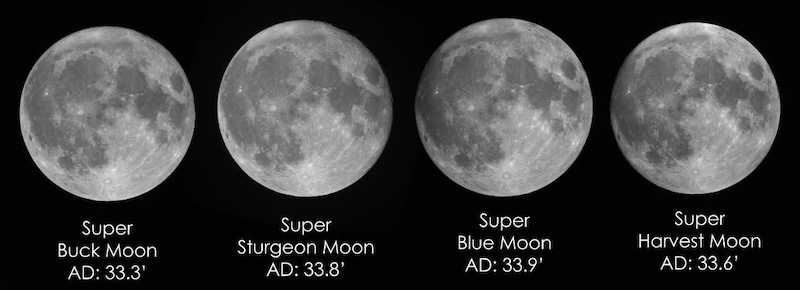
Supermoons came from popular culture
Where did the term supermoon originate? As it’s used today, the word supermoon was coined by astrologer Richard Nolle in 1979. And according to Nolle’s definition, a full moon or new moon is a supermoon when it’s also within 90% of its closest point to Earth. However, different websites calculate supermoons differently.
As mentioned above, EarthSky uses supermoon dates as determined by astronomer Fred Espenak. He’s best known for his time at the Goddard Space Flight Center, where he became a world expert on eclipse predictions. Additionally, his method of calculating supermoons takes into account changes in the moon’s orbit during each lunar cycle.
Supermoon hype?
Some astronomers complain about the name supermoon. They like to call supermoons hype. But supermoons aren’t hype. They’re special. Many people now know and use the word supermoon. In fact, we even notice some diehards are starting to use it now. Such is the power of folklore.
The hype aspect of supermoons probably stemmed from an erroneous impression people had when the word supermoon came into popular usage a few decades ago. Some people mistakenly believed a full supermoon would look much, much bigger to the eye. But it doesn’t. Nowadays, most people seem to realize that supermoons don’t look bigger to the eye than ordinary full moons.
It’s true experienced observers do say they can detect a difference. But you’d have to be a very keen observer to notice it.
Most of us can’t tell any difference in the size of a supermoon and an ordinary full moon.
Is a supermoon brighter?
But … supermoons do look brighter than ordinary full moons! By a noticeable amount. That’s because a supermoon exceeds the disk size of an average-sized moon by up to 8% and the brightness of an average-sized full moon by some 15%. And then, it exceeds the disk size of a micromoon (a year’s most distant and therefore smallest full moon) up to 14% and the brightness of a micromoon by some 30%. So go outside on the night of a full supermoon. Even if you’re a casual observer of the moon, there’s the potential you’ll notice the supermoon is exceptionally bright!
For a visual reference, the size difference between a supermoon and micromoon is proportionally similar to that of a U.S. quarter versus a U.S. nickel. Again, that difference isn’t noticeable to the eye at the moon’s distance. But the brightness difference is noticeable.
By the way, before we called them supermoons, we in astronomy called these moons perigean full moons, or perigean new moons. No doubt about it, supermoon is catchier.
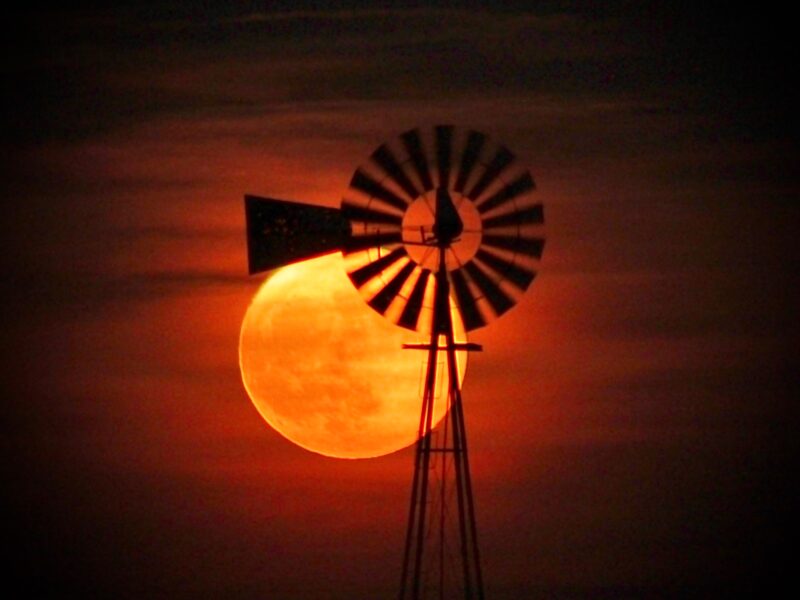
High tides from new and full supermoons
What’s more, all supermoons have the potential to cause higher-than-usual tides. High tides during the full or new moon are called spring tides. High tides during a full or new moon at perigee are called perigean spring tides, or, sometimes, king tides. And nowadays you sometimes hear them called supermoon tides.
These perigean or king or supermoon spring tides tend to follow the date of new or full moon by a day or so. These especially high tides are highly dependent on the shapes of local coastlines and on local weather conditions.
Do extra-high supermoon tides cause flooding? Maybe yes and maybe no. Flooding typically occurs when a strong weather system accompanies an especially high spring tide. According to Fred Espenak, the gravity from the closest supermoon is only 4% greater than the gravity from the moon at its average distance.
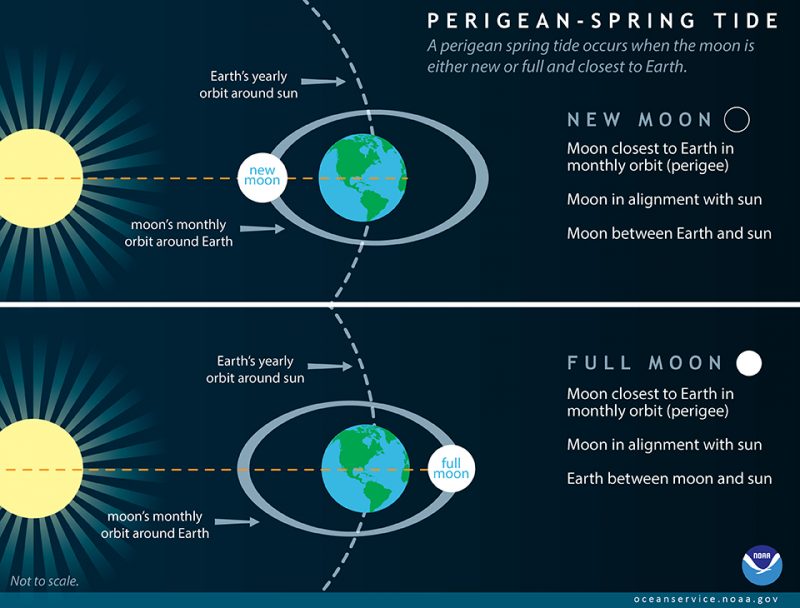
How often do we have a supermoon?
Often! But it also depends on your definition of supermoon.
Here’s a list of each year’s closest full supermoon perigees from 2016 to 2026 (from Espenak’s full supermoon table):
December 3, 2017 (357,987 kilometers or 222,443 miles)
January 2, 2018 (356,603 kilometers or 221,583 miles)
February 19, 2019 (356,846 kilometers or 221,734 miles)
April 8, 2020 (357,035 kilometers or 221,851 miles)
May 26, 2021 (357,463 kilometers or 222,117 miles)
July 13, 2022 (357,418 kilometers or 222,089 miles)
August 31, 2023 (357,344 kilometers or 222,043 miles)
October 17, 2024 (357,364 kilometers or 222,056 miles)
November 5, 2025 (356,980 kilometers or 221,817 miles)
December 24, 2026 (356,740 kilometers or 221,668 miles)
January 22, 2027 (357,643 kilometers or 222,229 miles)
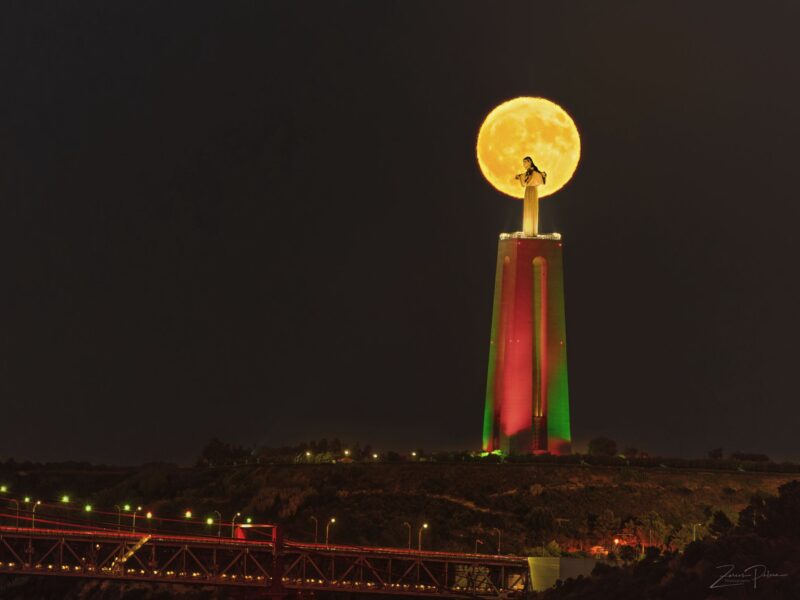
The recurring cycle of supermoons
The closest full moon supermoon in 2025 will recur after 14 lunar months (14 returns to full moon) after the closest full supermoon of 2024. That’s because 14 returns to full moon almost exactly equal 15 returns to perigee, a period of about one year, one month, and 18 days.
The mean lunar month (full moon to full moon, or new moon to new moon) = 29.53059 days, whereas the mean anomalistic month (perigee to perigee, or apogee to apogee) = 27.55455 days. Hence:
14 lunar months (14 returns to full moon) x 29.53059 days = 413.428 days
15 anomalistic months (15 returns to lunar perigee) x 27.55455 days = 413.318 days
So given that closest supermoon recurs in cycles of 413 days (about one year, one month and 18 days), we can expect the closest full moon supermoon to come about one month and 18 days later next year. Thus, the closest full supermoon of 2025 – November 5 – will be followed by the closest full supermoon 14 months later – December 24 – in 2026.
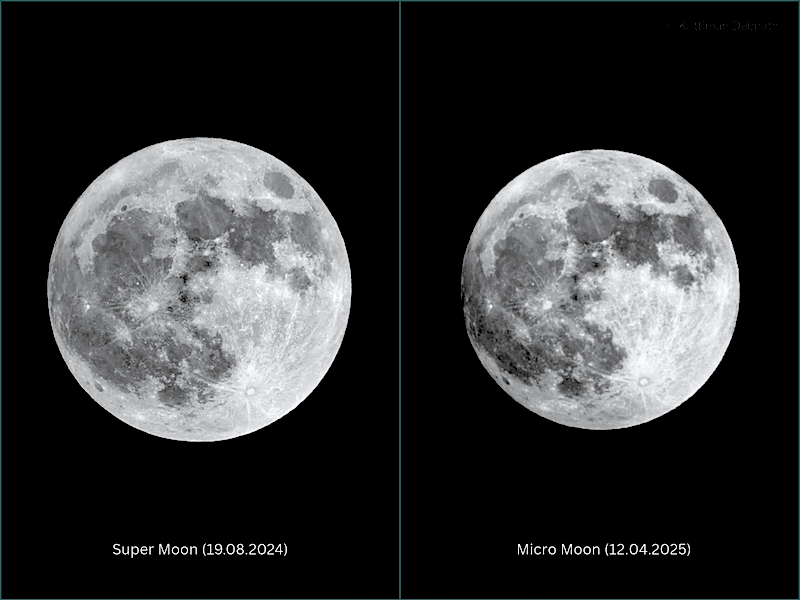
What about micromoons?
The opposite of a supermoon is a micromoon. That’s when the new or full moon reaches apogee or its greatest distance from Earth. A full micromoon appears about 12-14% smaller than a full supermoon and about 7% smaller than an average full moon.
The average moon distance of 238,900 miles (384,472 km). In 2025 there are three full micromoons, they are on March 14, April 13 and May 12. The micromoon on April 13 is the most distant full moon of the year and will lie 252,280 miles (406,006 kilometers) away.
There are also three new micromoons in 2025. They are on October 21, November 20 and December 20. The micromoon on November 20 is the most distant new moons this year. It’ll lie 252,699 miles (406,680 kilometers) away.
Bottom line: What’s a supermoon? We have five new supermoons early in 2025. Then we’re having three full supermoons in a row to end the year. Plus, January 2026 will have the last of four supermoons in a row.
Read more: Does a supermoon have a super effect on us?











